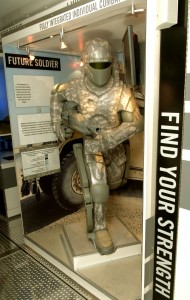
Industrial robotic arms are becoming almost as familiar to the average American as the classic humanoid science fiction robot. Now it may be time to look at another option: exoskeletons.
Exoskeletons, wearable robotics, are already a staple in the world of sci-fi. Even the simplest of exoskeletons use an array of motion control technology: sensors, servo motors, drives, and controls. But the wearable robotics industry faces one consistent problem, and that’s universal compatibility. Although certain niches like the military and manufacturing fields have managed to excel with advances in exoskeleton technology, more common walking assistance devices lack the “one size fits all” quality.
Granted, such an issue is expected when the technology’s purpose is to accommodate a diverse population of human beings with support for what are some of the most common yet complex actions our bodies are capable of. In the medical field, exoskeletons are designed to help bring back a sense of full body functionality to individuals with physical disabilities. However, in fields such as the military and manufacturing, exoskeletons are designed to enhance human performance and capability. Such technology typically assists users with carrying large amounts of weight with ease — a process that would otherwise be extremely strenuous.
Recently, an exoskeleton was tested in South Korea by Daewoo Shipbuilding and Marine Engineering. It allows the wearer to easily lift objects with a mass of up to 30 kilograms. Workers at the shipyard would fasten on the device with the help of strategically placed straps located from the feet to the chest. The system utilized a combination of motors and hydraulics, and was powered by a backpack-like device located on the wearer’s back. Gilwhoan Chu, leader of the exoskeleton’s research and development team, explained, “Our current research target of the lifting capacity is about 100 kilograms.”
Wearable robotics is benefiting from research in other areas, too. “Right now, because of the revolution in technology and smartphones. a lot of components that weren’t designed for robots—cameras, sensors, batteries, processors, and all of that—have become really cheap,” Dmitry Grishin, founder of Grishin Robotics, says. “And that has completely changed the whole industry.”
We’re looking forward to seeing the applications in industry. In the meantime, we can provide complete support for your legacy Indramat components. Put our number into your cell phone so it’ll be there when you need it.
